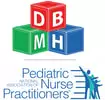Social Anxiety Disorder (Social Phobia): Screening & Assessment
Screens
- Liebowitz Social Anxiety Scale - Child Adolescent version (LSAS-CA)
- Social Phobia and Anxiety Inventory for Children (SPAI-C)
|
Home presentation can include:
|
School presentation can include:
|
Treatment
|
PSYCHOLOGIC
PSYCHOPHARM (note: there are no FDA-approved medications specific for social phobia in children at this time)
Take 2-6 weeks for initial improvement; therapeutic dose is usually around 12 weeks. |
HOME INTERVENTION
|
Articles
- Biederman, Hirshfeld-Becker, Rosenbaum, Hérot, Friedman, Snidman, Kagan & Faraone (2001). Further Evidence of Association Between Behavioral Inhibition and Social Anxiety in Children. Am J Psychiatry, 158, 1673–1679.
- Bostic, JQ and Bagnell, A. "School Consultation." In Comprehensive Textbook of Psychiatry, 8th Edition. Kaplan, BJ and Sadock, VA. Philadelphia: Lippincott Williams and Wilkins, 2000
Resources
|
Organizations
|
